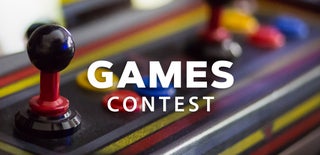Introduction: Mortal Kombat Wall Light
TOASTY! If you've seen some of my other Instructables, you can tell pretty quickly I'm a nerd for old school games. I have fond memories of playing Mortal Kombat with my brother, uppercutting and hurling projectiles at each other. I made a very simple wall light hang in my office to pay homage to the classic video game. It's a ~7 inch 3D printed casing with programmable LEDs for lights, an Attiny85 microcontroller for making the lights flicker like flames, and a microUSB header for powering it.
*Note: This is fan art. All copyrights and logos belong to their respective owners/publishers/companies
Supplies
- 3D Printer (I used an AnyCubic i3 Mega)
- Black PLA Filament
- Arduino or AVR Programmer
- 1 Prototyping Board
- 1 Attiny85 (or other microcontroller)
- 1 strip of programmable LEDs (WS8212s were used)
- 1 MicroUSB header
- MicroUSB cable
- Jumper wires
- Soldering Iron
- Solder
- Superglue and/or Electrical Tape
Step 1: Print the Logo Casing
The print will take a while so let's go ahead and print it. We'll do the circuitry while we wait for it to finish. I used the following print settings:
- Layer Height:0.3
- Infill: 5%
- Supports: No
I would position the model to be face-down e.g. the dragon is pointing toward the print plate.
Attachments
Step 2: Flash the Microcontroller
While we are waiting on the print to finish, we can go ahead and program our microcontroller with the flame flicker code for our programmable LEDs. Use the attached .ino file in your Arduino IDE. I used a TinyAVR programmer from Flashtree (yes, it is a knock off on Amazon but works well) and used the settings in the screenshot. You can also do this with a regular Arduino. Before uploading make sure you choose "Burn Bootloader". After it completes, choose the upload option.
If you are missing the attiny libraries, there's a great write-up here. If you are missing the NeoPixel libraries, go to Sketch > Include Libaries > Manage Libraries and search for Adafruit's neopixel library.
Attachments
Step 3: Connect All the Things and Attach to the Casing
We'll need to solder everything together on the prototype board to bring our print to life. I'd recommend doing things in this order:
- Wires to the LED strip
- MicroUSB header
- Microcontroller
- LEDs
Make sure to give yourself enough of a copper lead on the wires you are cutting. This will make things much easier to solder and connect.
The attached fritzing diagram shows how everything is connected but may seem a bit confusing as it differs from the picture. Unfortunately, there's no way to do solder lines in Fritizing and I ended up gluing the darn circuit board to the casing before taking pictures. I've attached a picture describing what's going on. The prototype board has through-holes so we can connect things over/under on the board. Most of the soldering will take place on the bottom of the board (see pictures for description). We can actually connect common components with a solder line, sparing us from having to add more wires and keep things a bit more tidy.
Step 4: Hang It!
This is a pretty lightweight project so a single nail should do it.

Participated in the
Games Contest













